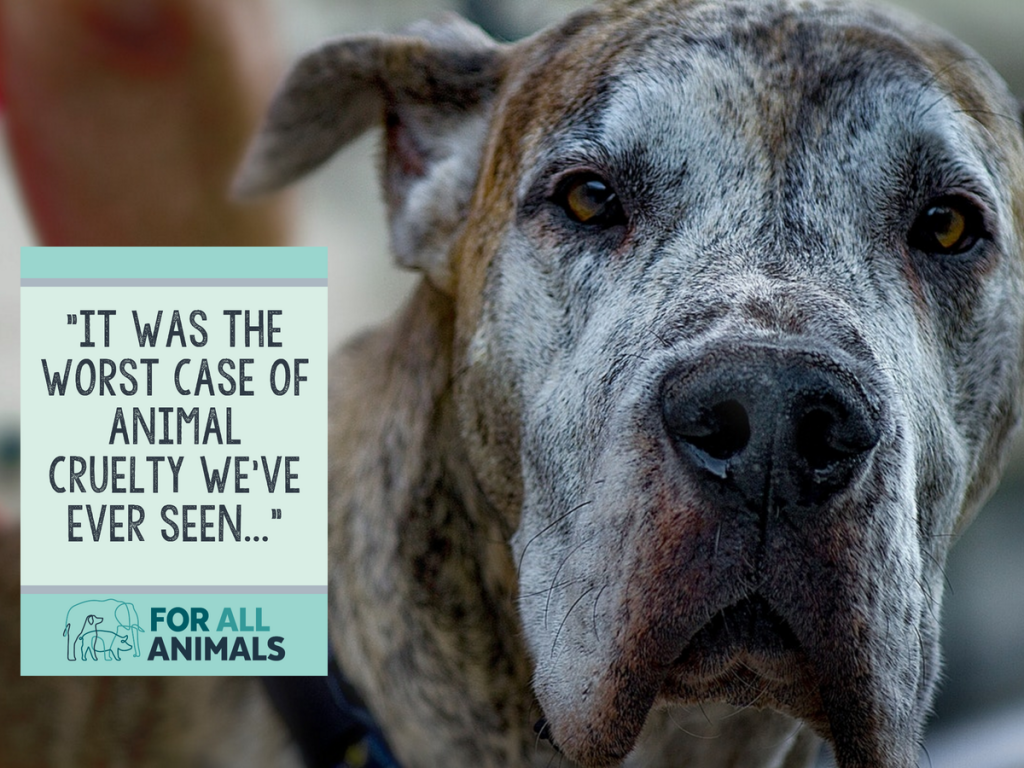Animal cruelty is an abhorrent reality that plagues societies around the world. Many cases of abuse not only evoke a visceral reaction but also challenge our moral compass as sentient beings. One particularly egregious instance stands out as a manifestation of humanity’s darkest capabilities—a case that leaves an indelible mark on anyone who learns about it. Delving into the depths of this case compels us to confront uncomfortable truths about compassion, responsibility, and our role in healing a world rife with suffering.
The particular case in question involved a group of dogs that were discovered in a dilapidated warehouse, a location that served as an operational front for illicit activities. These dogs, once living beings endowed with dignity and potential for loving companionship, had been relegated to a mere shadow of their existence, enslaved by human greed and callousness. Forced into a system of breeding that prioritized profit over their basic welfare, these animals endured incomprehensible hardships.
Upon the initial discovery, authorities reported a scene so harrowing it defies belief. The dogs were found in unsanitary conditions; their living quarters—if one can rightfully describe them as such—were steeped in filth and devoid of even the most basic essentials like food, water, or medical care. The stench of decay hung in the air, a stark reminder of the horrors that transpired within those walls. This would become one of the worst cases of animal abuse documented in recent history.
Through the lens of animal welfare, the question arises: How can such cruelty be normalized? The larger context reveals an unsettling pattern—a hierarchy of exploitation that often prioritizes profit margins over sentient life. The breeding practices employed were symptomatic of a deeply entrenched culture that fails to recognize the intrinsic value of these creatures. The commodification of animals leads not just to abuse, but also fosters a societal desensitization towards their plight.
What is particularly unsettling is the manner in which this kind of cruelty thrives in silence. It operates in the shadows, hidden away from public scrutiny, which permits the perpetrators to continue their malevolence unchecked. In this instance, the dogs were a mere cog in a grotesque machine driven by avarice. The ramifications of such egregious acts ripple through the very fabric of our communities, raising ethical questions regarding our collective responsibility.
The rescue operation turned this dark narrative into one of hope. Welfare organizations, spurred into action by public outcry and investigative reporting, embarked on a perilous mission to extricate these dogs from their hellish confines. But rescue alone is not the panacea it may initially seem to be. The physical and emotional scars left on these animals require comprehensive and sustained intervention. Rehabilitation efforts must encompass not only medical care but also an understanding of behavioral rehabilitation. The ability of these dogs to trust humans again, to feel safe and secure, has been irrevocably compromised by the trauma they endured.
The stories of individual rescues provide poignant insights into the resilience of these animals. For instance, some dogs exhibited signs of extreme anxiety, hiding in corners or reacting aggressively to human interactions. Others shivered uncontrollably, their bodies a mere reflection of the torment they had suffered. These response patterns highlight the depth of the psychological cruelty inflicted upon them.
The legal ramifications of such cases often provoke debate. Current animal protection laws vary significantly across jurisdictions, revealing a disjointed commitment to animal welfare. While some regions have instituted robust statutes to prevent cruelty, others operate with minimal legal frameworks. This discrepancy in legislation contributes to a sense of helplessness and reinforces the notion that animal lives hold varying degrees of value. Comprehensive reform efforts are essential to ensure that incidents of abuse are met with stringent consequences commensurate to the severity of the offenses.
Public awareness plays a critical role in combatting animal cruelty. Education is paramount; understanding the signs of abuse, learning how to report suspected cases, and advocating for legislative change can collectively empower communities. Awareness campaigns must aim to dismantle the apathy surrounding these issues, illuminating the fact that animal cruelty often correlates with broader societal problems, including domestic violence and sociopathic behavior.
A shift in perspective begins with recognizing our interconnectedness with all living beings. Compassion cannot be relegated to a selective practice reserved only for certain species; it must extend universally. Each effort to ameliorate the suffering of animals must also provoke introspection regarding our own habits and the choices we make in our daily lives. Our consumer behaviors, from pet ownership decisions to product purchases, have ramifications that extend far beyond our immediate circles.
The worst case of animal abuse I have ever encountered is more than an isolated incident. It serves as a call to action—a message demanding we acknowledge the suffering that exists all around us. We must resist the urge to look away and instead strive for a world where every creature is afforded the dignity and compassion it deserves. Together, we can foster an environment that does not just tolerate but actively supports the sanctity of animal life, creating a future where such egregious cases become an anathema rather than a regrettable norm. The road to change is arduous; however, it is paved with empathy, commitment, and unwavering advocacy that can usher in a brighter future for all beings.










